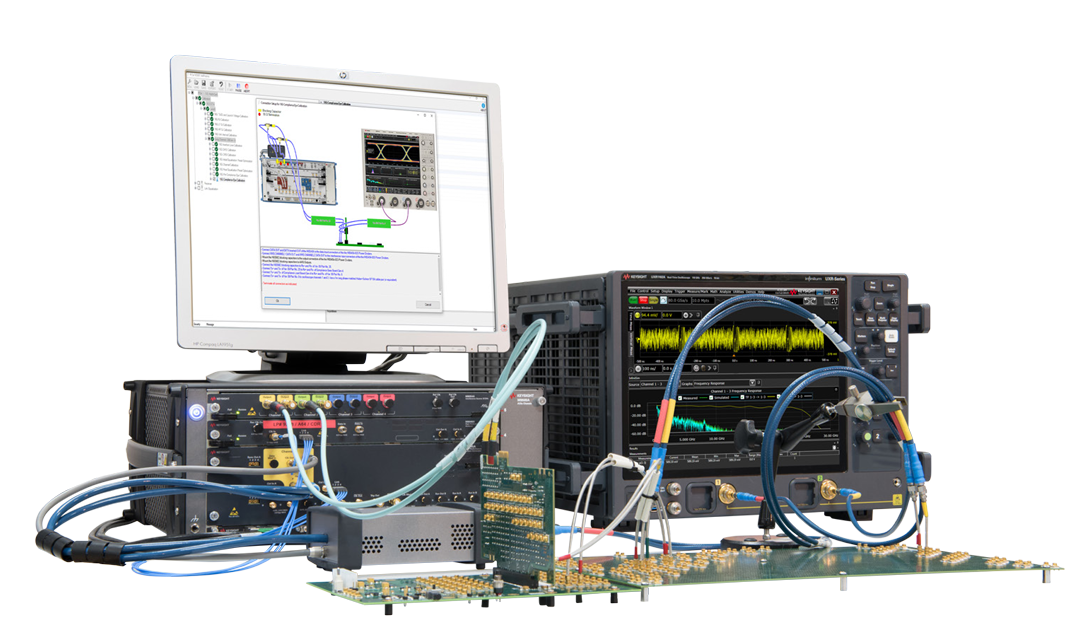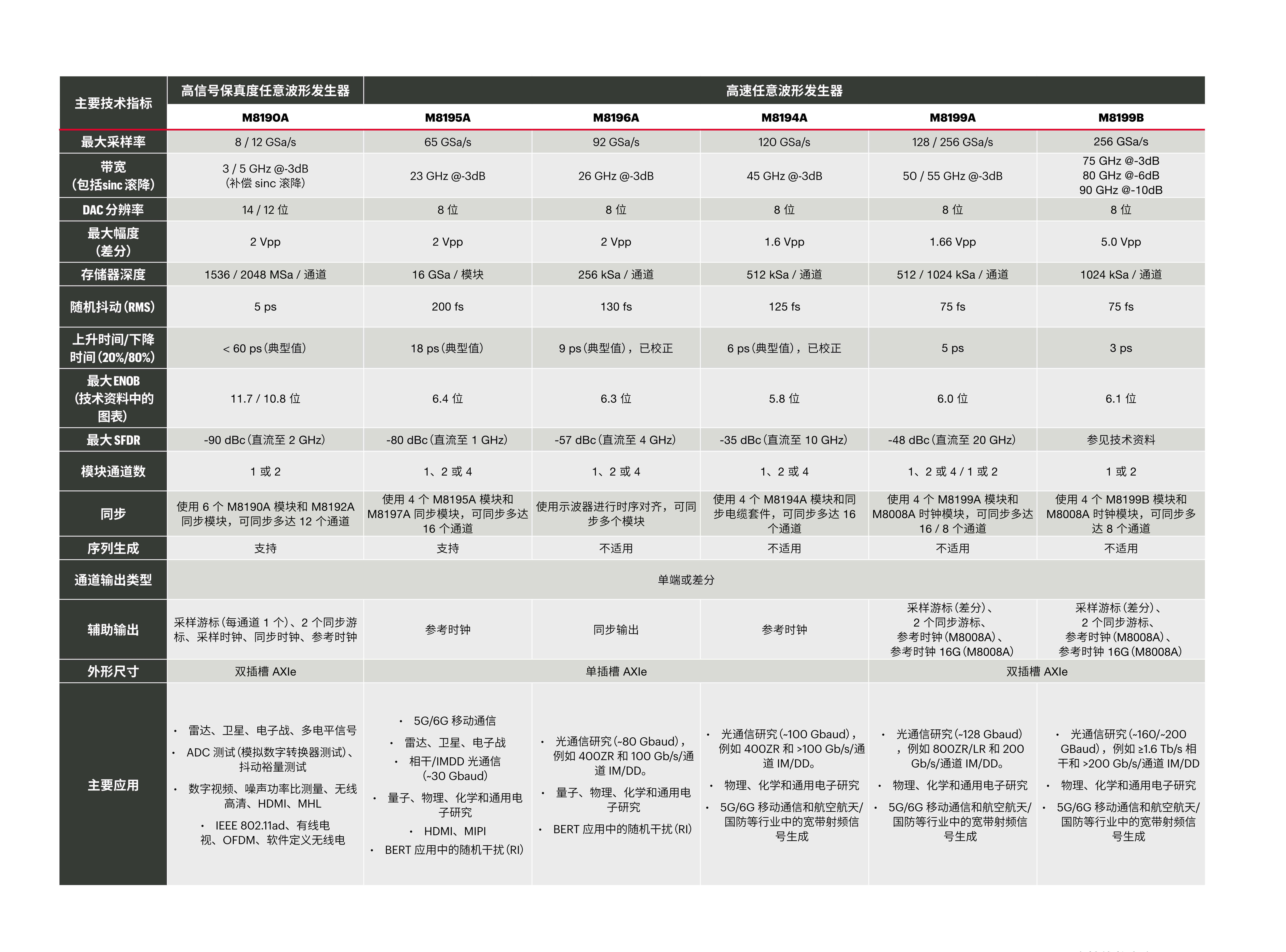Arbitrary Waveform Generator (AWG) Frequently Asked Questions?
An Arbitrary Waveform Generator is a signal source capable of generating any desired waveform, using pre-stored digital data that describes the ever-changing voltage of the signal. Arbitrary waveform generators offer greater flexibility and accuracy and can generate almost any user-defined signal shape. It is widely used in communication, test and measurement, education, and scientific research.
Arbitrary Waveform Generator - Key Specifications?
Key technical specifications of arbitrary waveform generator, such as memory size, sampling rate, dynamic range, bandwidth, spurious-free dynamic range, effective number of bits, jitter, etc., and how to choose the right generator according to these specifications.
Arbitrary Waveform Generator generates simulated real-world signals?
Principles and functions of arbitrary waveform generators and how to generate complex signals such as modulated signals, pulsed signals, noise signals, etc. using arbitrary waveform generators.

How to use an arbitrary waveform generator for signal modulation?
Signal modulation is the use of one or more parameters to alter a carrier signal in order to facilitate the transmission of information. Common types of modulation are Amplitude Modulation (AM), Frequency Modulation (FM), Phase Modulation (PM) and so on. An Arbitrary Waveform Generator (AWG) is an instrument capable of generating waveforms of any shape, which can be used for a variety of signal modulations.
How does an arbitrary waveform generator capture signals?
- Use an Oscilloscope or Spectrum Analyzer to capture the signal, then save it as a CSV file and transfer it to the Arbitrary Waveform Generator via USB flash drive or network to import it into its memoryh.
- Use the waveform editor that comes with the arbitrary waveform generator or an external software application, such as BenchVue, to create or edit arbitrary waveforms and then store them in the memory of the arbitrary waveform generator. h
- Use the arbitrary waveform generator's formula editor to enter mathematical expressions to generate arbitrary waveforms, which are then stored in the arbitrary waveform generator's memory.
What are the application areas of Arbitrary Waveform Generator?
Arbitrary waveform generators are used in communications, radar, electronic warfare, medicine, biology, physics, chemistry, etc., to simulate various signals in the human body or in nature, or for the design, testing and verification of communications systems, radar systems, electronic warfare systems, etc.

What is an Arbitrary Waveform Generator (AWG)?
An arbitrary waveform generator is a type of signal generator that generates realistic waveforms and provides a wide range of excitation signals. The various types of signals they generate are often used to stress test devices for communication protocols.
What are the main uses of Arbitrary Waveform Generators?
Digital developers can use AWGs to generate test signals to provide excitation for a device under test (DUT) and use an oscilloscope to analyse the operating state of the device.
How do I use an arbitrary waveform generator?
Test engineers use arbitrary waveform generators to verify the design of a circuit in just a few steps: (1) activate the output control, (2) select the waveform to be generated, (3) connect the outputs to the DUT, and (4) use an oscilloscope to verify the performance of the DUT.
What is the difference between an arbitrary waveform generator and a function generator?
A function generator provides a preset list of waveforms or code patterns it can generate. In a function generator, the user can change waveform parameters such as frequency, amplitude, and offset, as well as add simple distortion. Arbitrary waveform generators are more complex and can emulate real-world signals. Arbitrary waveform generators generate these waveforms using pre-stored digital data that describes the changing voltage of the signal. Typically, arbitrary waveform generators produce customised waveforms that have been compiled, rather than common waveforms that have been preset.

An Arbitrary Waveform Generator is a signal source capable of generating any desired waveform, using pre-stored digital data that describes the ever-changing voltage of the signal. Arbitrary waveform generators offer greater flexibility and accuracy and can generate almost any user-defined signal shape. It is widely used in communication, test and measurement, education, and scientific research.
Arbitrary Waveform Generator - Key Specifications?
Key technical specifications of arbitrary waveform generator, such as memory size, sampling rate, dynamic range, bandwidth, spurious-free dynamic range, effective number of bits, jitter, etc., and how to choose the right generator according to these specifications.
Arbitrary Waveform Generator generates simulated real-world signals?
Principles and functions of arbitrary waveform generators and how to generate complex signals such as modulated signals, pulsed signals, noise signals, etc. using arbitrary waveform generators.

How to use an arbitrary waveform generator for signal modulation?
Signal modulation is the use of one or more parameters to alter a carrier signal in order to facilitate the transmission of information. Common types of modulation are Amplitude Modulation (AM), Frequency Modulation (FM), Phase Modulation (PM) and so on. An Arbitrary Waveform Generator (AWG) is an instrument capable of generating waveforms of any shape, which can be used for a variety of signal modulations.
How does an arbitrary waveform generator capture signals?
- Use an Oscilloscope or Spectrum Analyzer to capture the signal, then save it as a CSV file and transfer it to the Arbitrary Waveform Generator via USB flash drive or network to import it into its memoryh.
- Use the waveform editor that comes with the arbitrary waveform generator or an external software application, such as BenchVue, to create or edit arbitrary waveforms and then store them in the memory of the arbitrary waveform generator. h
- Use the arbitrary waveform generator's formula editor to enter mathematical expressions to generate arbitrary waveforms, which are then stored in the arbitrary waveform generator's memory.
What are the application areas of Arbitrary Waveform Generator?
Arbitrary waveform generators are used in communications, radar, electronic warfare, medicine, biology, physics, chemistry, etc., to simulate various signals in the human body or in nature, or for the design, testing and verification of communications systems, radar systems, electronic warfare systems, etc.

What is an Arbitrary Waveform Generator (AWG)?
An arbitrary waveform generator is a type of signal generator that generates realistic waveforms and provides a wide range of excitation signals. The various types of signals they generate are often used to stress test devices for communication protocols.
What are the main uses of Arbitrary Waveform Generators?
Digital developers can use AWGs to generate test signals to provide excitation for a device under test (DUT) and use an oscilloscope to analyse the operating state of the device.
How do I use an arbitrary waveform generator?
Test engineers use arbitrary waveform generators to verify the design of a circuit in just a few steps: (1) activate the output control, (2) select the waveform to be generated, (3) connect the outputs to the DUT, and (4) use an oscilloscope to verify the performance of the DUT.
What is the difference between an arbitrary waveform generator and a function generator?
A function generator provides a preset list of waveforms or code patterns it can generate. In a function generator, the user can change waveform parameters such as frequency, amplitude, and offset, as well as add simple distortion. Arbitrary waveform generators are more complex and can emulate real-world signals. Arbitrary waveform generators generate these waveforms using pre-stored digital data that describes the changing voltage of the signal. Typically, arbitrary waveform generators produce customised waveforms that have been compiled, rather than common waveforms that have been preset.








